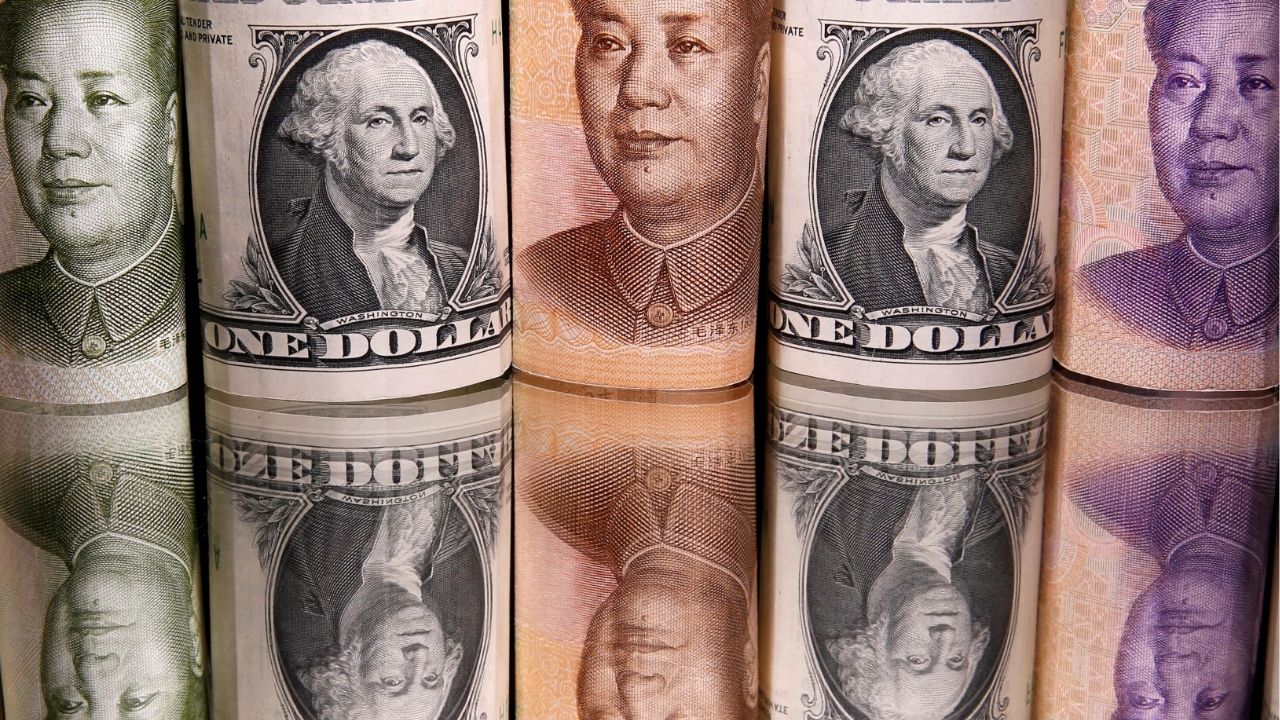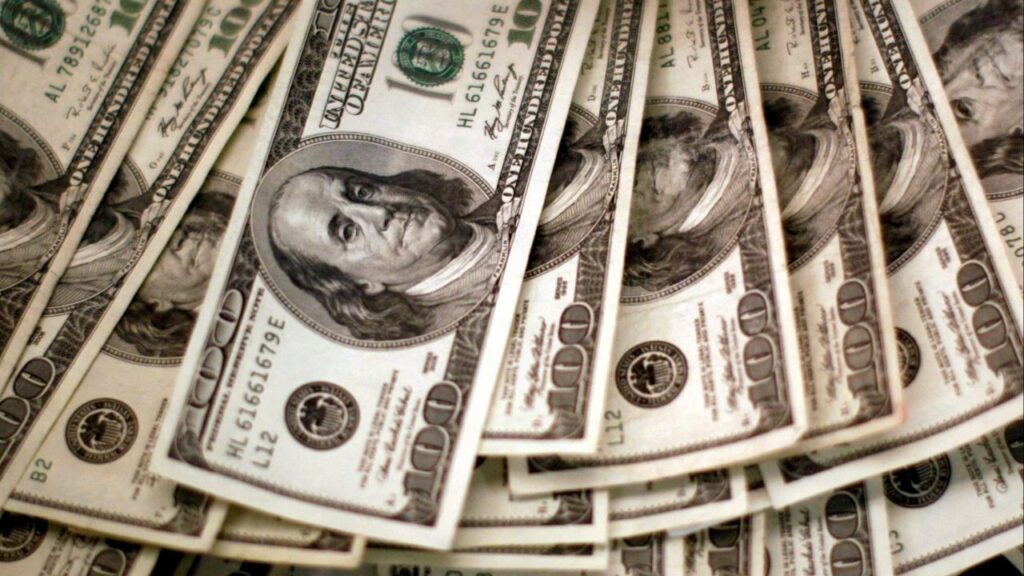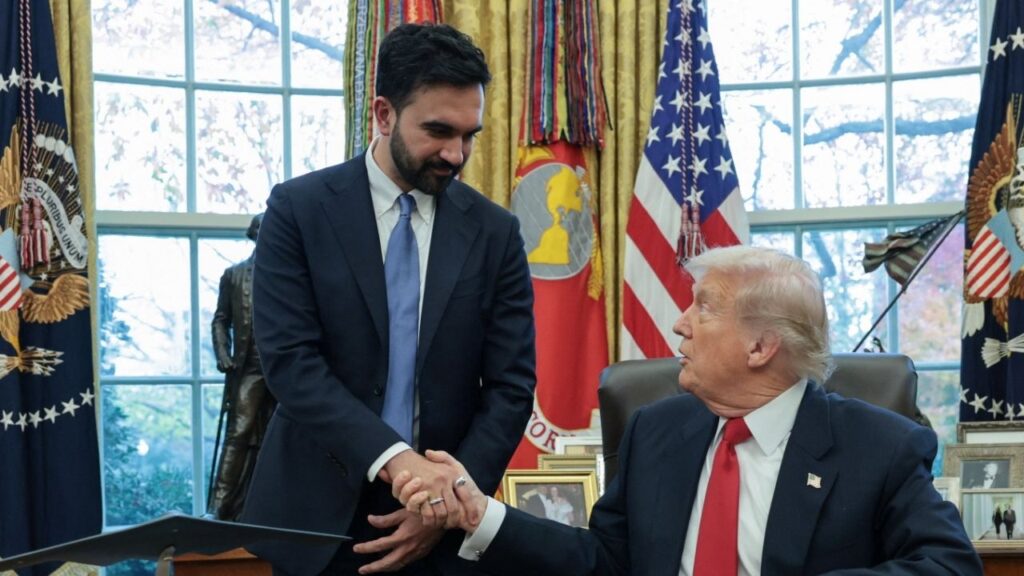Chinese Yuan and U.S. dollar banknotes are seen in this illustration taken February 10, 2020. (Reuters/Dado Ruvic/Illustration)

- The dollar rebounded as Trump’s softer tone on China trade eased tensions, while political shifts pressured the euro and yen.
- Dollar index climbed to 99.32 after Friday’s tariff-driven slump; Swiss franc and yen weakened on safe-haven reversal.
- Crypto markets steadied after record $19 billion liquidation, as investors assessed easing trade rhetoric and global political moves.
Share
|
Getting your Trinity Audio player ready...
|
The dollar edged higher against major peers on Monday, after a change in rhetoric from U.S. President Donald Trump lowered the temperature of simmering trade tensions with China, while political developments in France and Japan undermined the euro and the yen.
The U.S. dollar strengthened 0.78% to 0.805 against the Swiss franc after losing ground in the previous session after Trump announced 100% tariffs on China.
The broadside revived bad memories of Trump’s Liberation Day rollout of sweeping tariffs in April and sparked a selloff in stocks and cryptocurrencies on Friday.
“It’s kind of a repeat of what happened after Liberation Day,” said Eugene Epstein, head of trading and structured products at Moneycorp in New Jersey.
“Traditionally, the U.S. dollar strengthens when there’s any kind of risk off or any kind of stress across asset classes or markets and, like Liberation Day, the opposite happened because of trade tensions between the U.S. and fellow trade partners in this case, China. Any time something like that comes up people actually sell the U.S. dollar,” Epstein said.
The dollar index, which measures the U.S. currency’s performance against a basket of six others, was last up 0.27% at 99.32, recovering from the previous session’s drop.
Trump Softens Tone
After announcing the 100% tariffs on Friday, Trump said on Sunday: “Don’t worry about China, it will all be fine!”
“Highly respected President Xi just had a bad moment,” he posted on the Truth Social network. “He doesn’t want Depression for his country, and neither do I. The U.S.A wants to help China, not hurt it!!!”
U.S. Treasury Secretary Scott Bessent said on Monday he was confident the standoff could be “de-escalated,” which curbed some of the dollar’s gains.
“I still believe across all developed currencies, the U.S. dollar is still the primary safe haven; obviously, the Swiss franc is as well. With what happened last week, it was just essentially the same playbook: any kind of trade tensions means sell the U.S. dollar. Today, things are reversing because the trade tensions are seemingly de-escalating a little bit,” Epstein added.
European markets broadly shrugged off the French presidency’s announcement of Prime Minister Sebastien Lecornu’s new cabinet lineup on Sunday, reappointing Roland Lescure, a close ally of Emmanuel Macron, as finance minister.
The euro was last down 0.43% at $1.1564 after advancing against the dollar in the previous session.
Against the Japanese yen, the dollar strengthened 0.81% to 152.36. A public holiday in Japan made for thinner trading.
Markets meanwhile assessed the path ahead for new Liberal Democratic Party leader Sanae Takaichi after Komeito quit Japan’s ruling coalition on Friday, dealing a blow to her hopes of becoming the first female prime minister of the world’s fourth-largest economy.
Traders will often borrow in a low-yielding currency to invest in a higher-yielder, known as a carry trade. The Japanese yen and Swiss franc have typically been funding currencies and took a harder knock than others on Monday.
The Australian dollar, which tends to rally in a risk-on environment, rose 0.65% to $0.6511, making it one of the best-performing major currencies against the dollar on Monday.
Sterling weakened 0.25% to $1.3324. The dollar weakened 0.14% to 7.137 versus the offshore Chinese yuan.
The crypto sector last Friday experienced over $19 billion in liquidations of leveraged positions, which market players said were the largest in history, after Trump announced the tariffs on Chinese imports and hinted at possible export restrictions on key software. On Monday, bitcoin was down 0.60% to $114,375.22 while Ethereum declined 0.54% to $4,120.42.
—
(Reporting by Chibuike Oguh in New York; Additional reporting by Gregor Stuart Hunter; Editing by Shri Navaratnam, Jamie Freed, Aidan Lewis, Toby Chopra and Andrea Ricci)
RELATED TOPICS:
Categories

MAHA Activists Urge Trump to Fire His EPA Administrator


















